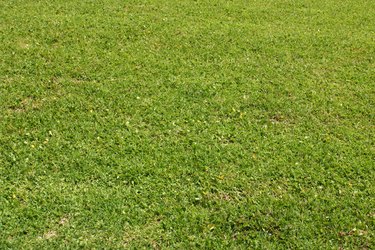
Moles are frustrating pests for many homeowners. These insectivores tunnel through dirt to find insects to eat, which causes dirt mounds to appear all over the yard. While moles are annoying pests, they do not damage homes or tunnel through walls. Moles can travel quickly and spread to neighboring yards, so control methods should be implemented as soon as mole activity is noticed.
Identification
Video of the Day
Moles are usually 6 to 8 inches in length and weigh up to 6 ounces. The most common species of moles are the Star-nosed mole, Eastern mole and the Hairy-tailed mole. Their large, padded front feet allow moles to construct expansive tunnel systems. Moles are much more difficult to control when they are allowed to tunnel for long periods of time before control measures are implemented.
Video of the Day
Effects
Tunneling through grass and dirt is the way moles search for their primary food source, earthworms. Moles will also eat white grubs and other small insects. Homeowners who have moles actively searching for food in their yards will see mounds of fresh dirt scattered all over the grass. Moles do not usually damage the roots of ornamental plants, but damage may occur if plant roots are exposed during tunneling. While moles are troublesome, they do not damage the structure of homes or buildings and cannot tunnel their way through concrete.
Repellents
There are a variety of mole repellent products, but the results are not consistent. Many homeowners try homemade remedies, such as kerosene, ammonia or gasoline, which are ineffective and damaging to the environment. Altering the environment in your yard, may reduce mole tunneling. Reducing watering frequency on your lawn grass may help keep insects from coming to the surface where moles can feed on them. Less frequent watering may also make tunneling activity less visible.
Trapping
According to the University of Ohio, trapping is the most reliable way to control moles. The types of traps available include choker loops, scissor-jaws and harpoons. Traps work best when they are placed inside active surface burrows. Main runways are often along walkways, fence lines or the perimeter of lawns or woody areas. Trapping is most successful in the spring and fall after periods of rain. Moles are much more difficult to trap in the summer and winter when they are deeper underground.